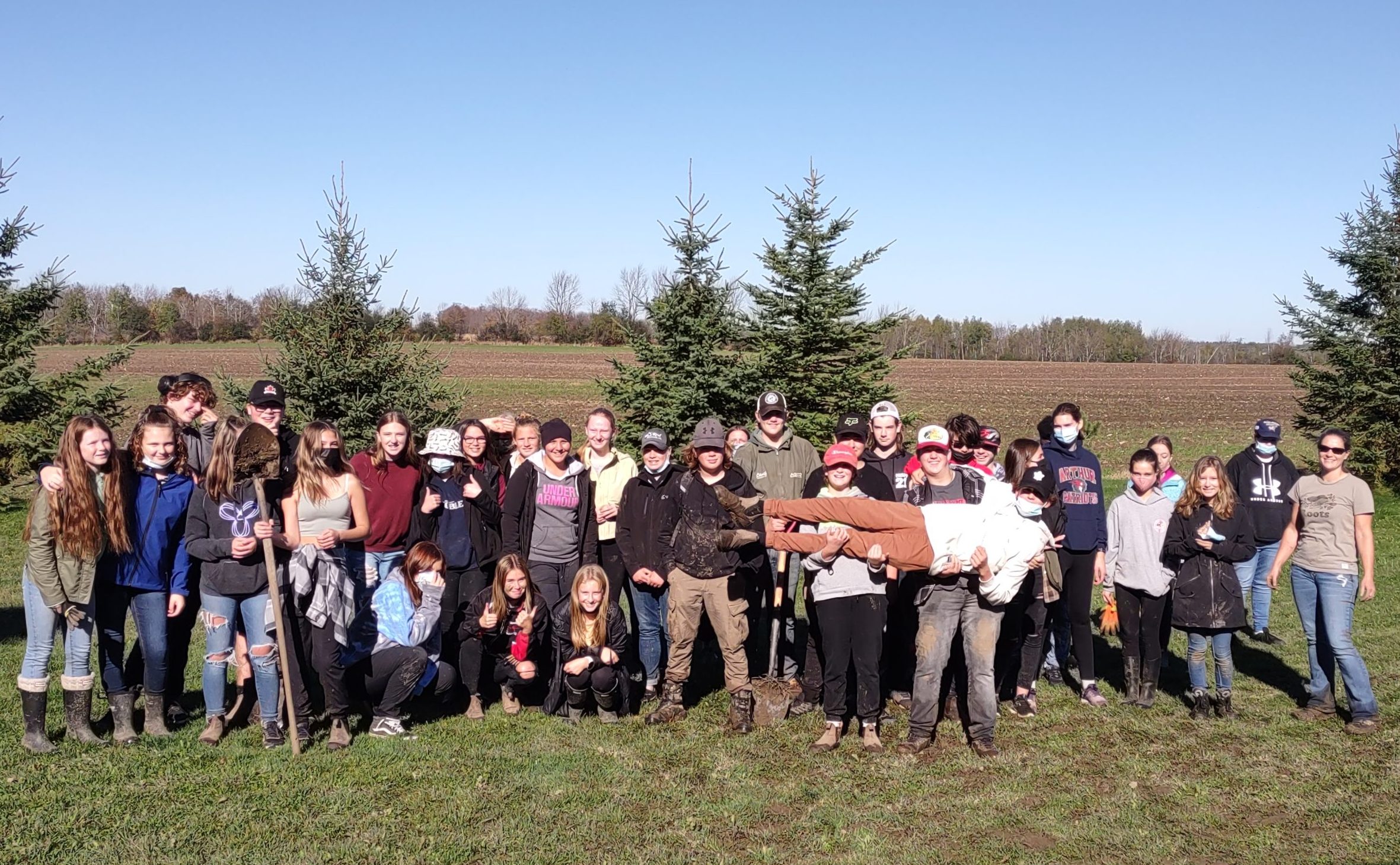MOUNT FOREST – Students and staff at Wellington Heights Secondary School (WHSS) have transplanted 80 red pine trees along the perimeter of the school property.
And while the planting took place on Oct. 20, the project was initiated two years ago, when community member Daphne Rappard contacted WHSS Community Environment Leadership Program (CELP) teacher Jen Cork about trees on a vacant lot close to the school.
Rappard had noticed the lot was going to be developed, and wondered if the school’s CELP students might be able to do something to save some of the trees.
“Due to impending excavation on the lot, the trees were set to be destroyed,” states a press release from WHSS principal Brent Bloch.
“Then the COVID-19 pandemic struck, and the project was put on hold.”
Cork and Rappard reconnected this fall as the site still had not been developed and the trees were flourishing on the vacant lot owned by Wilson Developments.

WHSS students transplanted trees on the school property on Oct. 20. Submitted photo
“Cork contacted Brad Wilson, from Wilson Developments, who was very co-operative, and assisted Cork with gaining permission to dig up the trees and transplant them onto the school grounds,” stated Bloch.
And so, on Oct. 20, WHSS teacher Ken Kivell and his Grade 9 geography classes joined Cork and her Grade 9 science class to transplant the 80 red pine trees.
“Most of the trees were tagged by students, and the goals are that students will monitor the growth of their trees over the course of their four years at Wellington Heights, and will develop pride in caring for their trees,” said Bloch.
“The decision to include the Grade 9 Science and Geography students to participate in the project linked to the direct connections to the ecology unit in Grade 9 science, and to much of the curriculum in the Grade 9 geography class.”
Bloch added the transplanting project also presented the opportunity for students “to get outside, to learn how to transplant trees, and to develop some appreciation for the natural environment.
“It gave students first-hand experience of the impact that humans can have on our environment – both negative and positive.”




